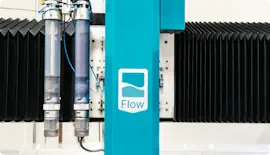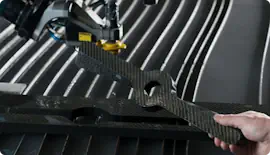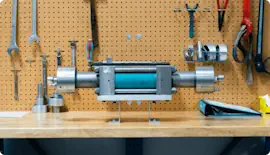Are You Really Cutting With Water?
The 5 Most Common Waterjet Questions - Part One of Five
Waterjet technology is both fascinating and perplexing – especially for those learning about it for the first time. In this series, we’ll address the questions our experts hear the most and unpack the science and technology behind them. Let’s get started. Question #1: Are you really cutting with water? Waterjet is awe-inspiring technology.It doesn’t matter if you’ve been using it for 30 years or if you’re experiencing it for the first time – it’s fascinating to think every day tap water mixed with sand can cut 24” thick steel or how water alone can cut chicken nuggets – but waterjets reliably perform these feats day in and day out.
You see, we’re used to water being soft. We bathe in it, we drink it, along with a host of other everyday activities. And, while we are fully aware that water can be pressurized to high levels for cleaning or putting out fires, the idea that it can cut something feels next level. It’s no surprise that one of the most common questions we encounter as waterjet application specialists is, “Are you really cutting with water?”
The short answer is yes! Let’s dive into the science behind one of the most versatile machine tool solutions available.

Waterjets cut using a supersonic erosion process. Think of the Grand Canyon, forged by nature through erosion. In waterjet cutting, we’re using the same process and principles, but it’s sped up to supersonic speeds.
Using ultrahigh-pressure water (pressurized at 60,000 psi or above in an ultrahigh-pressure pump), we create a highly precise waterjet stream that erodes away material quickly and with impressive accuracy to create the desired part.
Using water alone, we can cut soft materials, such as foam, rubber, insulation, soft plastics, and foods for example. The general rule of thumb is, if you can cut it with a razor blade or a knife, you can cut it with water only on a waterjet.
Perhaps even more surprising is that in addition to soft materials, waterjets are also used to cut complex, hard materials. Wondering how this is possible?

In the early 1980’s Flow and Dr. Mohamed Hashish developed abrasivejet cutting, adding abrasive sand into the high-powered waterjet stream. The simple addition of this medium allows for more powerful cutting, which opened the door to a host of hard materials including Inconel, metals, composites, ballistic materials, stone, and more.
This means that the primary question when considering waterjet shifts from, “can waterjet cut my material?” to “how fast and how efficiently can waterjet cut my material.”
Generally, the harder a material is to process, machine, or cut traditionally, the better the application becomes for abrasive waterjet. In addition to the massive versatility waterjet delivers regarding materials it can cut, the technology also allows for intricate, precise cutting, 5-axis cutting, and nearly unlimited shapes.
In short, waterjet is an impressive technology. One that’s not only fun to watch (check out the video below) but is also an extremely effective machine tool solution.
Stay tuned for our next installment in this series (part 2 of 5) to learn more about waterjet.



